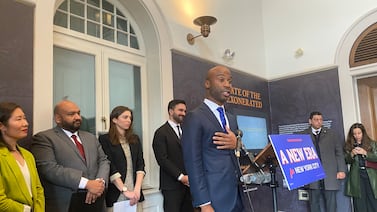Chalkbeat and nonprofits across the world are participating May 5 in Giving Tuesday Now, a global day of giving. We hope to raise $15,000 to help fuel our reporting on schools. Now more than ever, we need local news.
In the video, Chalkbeat cofounder & CEO Elizabeth Green highlights Chalkbeat’s work since the COVID-19 outbreak began, and explains how our reporting will impact what happens next in public school systems.
“We can let school be recreated, budgets rewritten in the dark without community input, or we can decide together to shine a light.” —Chalkbeat cofounder & CEO Elizabeth Green
We could not do any of this without you, and we will need your continued support to keep going. Your donation today will be doubled immediately, thanks to our Board of Directors.
Please consider making a donation here to support our work. Your help ensures that we can continue to tell the story of public schools across the country.
With gratitude,
Kary Perez and the Chalkbeat team





